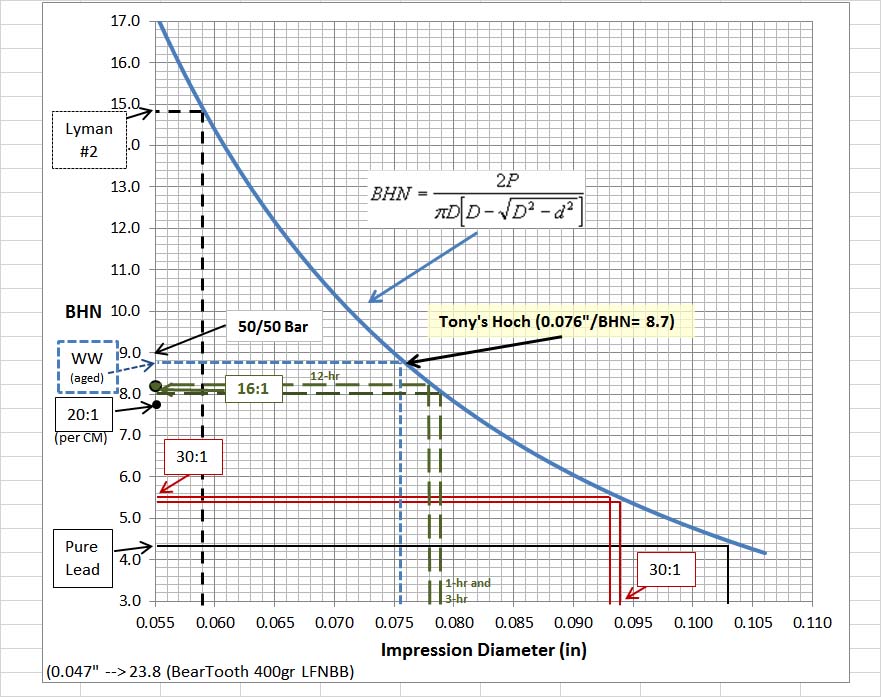"My reason is old guns..."
Me too... and this is the basic stuff I use to cast round balls (pure lead if you can find it) for my muzzleloaders, and lead/tin alloyed bullets for my B.P.C.R. needs. This is what I use for my casting purposes, which may (might/could) well work for you, too:
1.) You need a good heat source. I use a plumber's furnace, fueled by LP gas. You also need a good, safe area to do your casting with good ventilation. Good, heavy leather gloves and safety glasses are also needed when casting bullets (IMO). I cast in my garage with two floor/window fans pulling fumes out of a window in front of my casting pot. Long sleeve shirt and long pants, too, and shoes and socks are my clothing when casting my stuff.
2.) You need a good cast iron pot, in which to melt your lead (mine easily holds 20 lbs. of molten lead). You also need a good casting thermometer, and a good lead ladle. I'm a dip method guy from the top of the pot using my great old Lyman lead dipper. There are other methods, I like dip ladling.
3.) Make sure your bullet mold is degreased completely before using it. I use spray on brake cleaner to thoroughly degrease my molds when new. This is the first step in mold prep. There's more to mold care than I care to get into here.
4.) Before you get good bullets out of your mold once you start casting, everything has to be heated to the proper temperature before you'll get a good run of bullets, and this is where your thermometer comes in. I've found melt temp runs between 750 to 800 degrees, generally. Round balls for M.L.s are pretty easy, but bullets for a cartridge gun take a bit more time and patience to get a good run started; this is true for me, anyway. Once your bullets start coming out good (no wrinkles and good sprue cut-offs), keep consistent with your casting cadence. Your pouring, your sprue cutting, your bullet-drop into your catch pen (I use a folded-up cotton dish cloth to catch a bullet as it falls from the mold, and then I roll them off the cloth and into the bottom edge of my cardboard box that's inclined enough to let the bullets gently roll slowly to the edge of the box). Whew! I use a 24 can cardboard beer case for this, and it works really well for me. Skinning cats here... I also use one of these same boxes to catch my sprue cuts, bad bullets and pot skimmings as I go along with the session (and they're free, too!). Once you get a good run going, and then you find you need to add more lead to the pot, you'll have to stop that good run, add more lead, and heat things up once again (themometer time). I rubber band my mold by its handle (the mold itself hanging over the pot to keep its heat), to the wooden handle of my pot while I add more lead. The mold stays heated quite well this way and it doesn't take long to make good bullets once you get the lead temp. back up again. The heat for everything is all important. Some molds really take a LONG time to get them heated properly to run good bullets (think wrinkles and bad grease grooves!). Enough here... just remember if you get frustrated with wrinkles and bad bullets, you probably need more heat on that mold (IMO).
5.) Learn to develope a good, consistent cadence in your casting procedure/method, which will really help you to make good bullets. Also, make sure your casting bench is at the right height to be comfortable while working. And use that time when adding lead to the pot to take a break from the job. It's kinda tedious sometimes (and sometimes frustrating). I generally weigh/inspect cooled bullets during this break/lead heating up time.
6.) I use pure lead for my muzzleloaders, and I mix my own alloy when making bullets for my B.P.C.R. rifles (2 Sharps, and a rolling block). I use a 20:1 alloy for all my B.P.C.R. needs and mix my tin with my pure lead stock I've had for many years (got a lifetime supply of plumber's lead from a construction job I worked on many years ago; pretty lucky there). I got a fair deal on a good supply of tin a number of years ago, too. And like everything else, I'm sure tin isn't now what I paid for it back then. I'm stocked up fairly well.
8.) Find one of Lyman's "Bullet Casting Handbooks." I won a 3rd edition copy at a muzzleloading match many years ago, and have used it a lot through the years. I'm sure it's still available, and probably updated a bit since my edition was published...

.
Of course, there's a lot more than what I mentioned here briefly to get a good handle on casting good bullets, but what I've shared here can get you started in the right direction. If you can find someone near you, who you may know who does bullet casting, see if you can watch the procedure. Maybe they'll let you "run" a few. It's a great and satisfying thing; a new avenue of the reloading experience.


